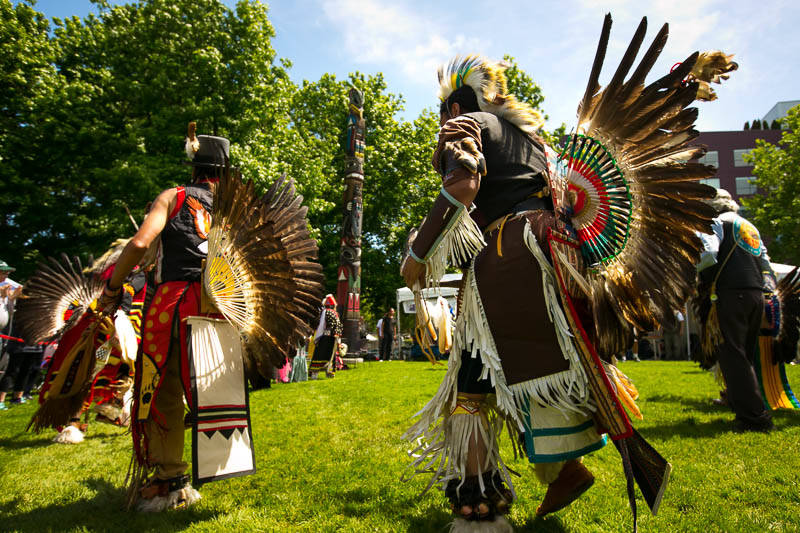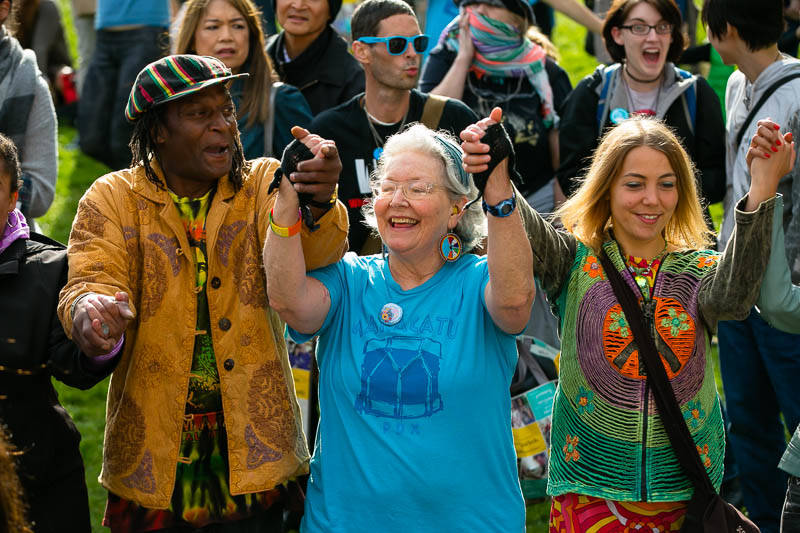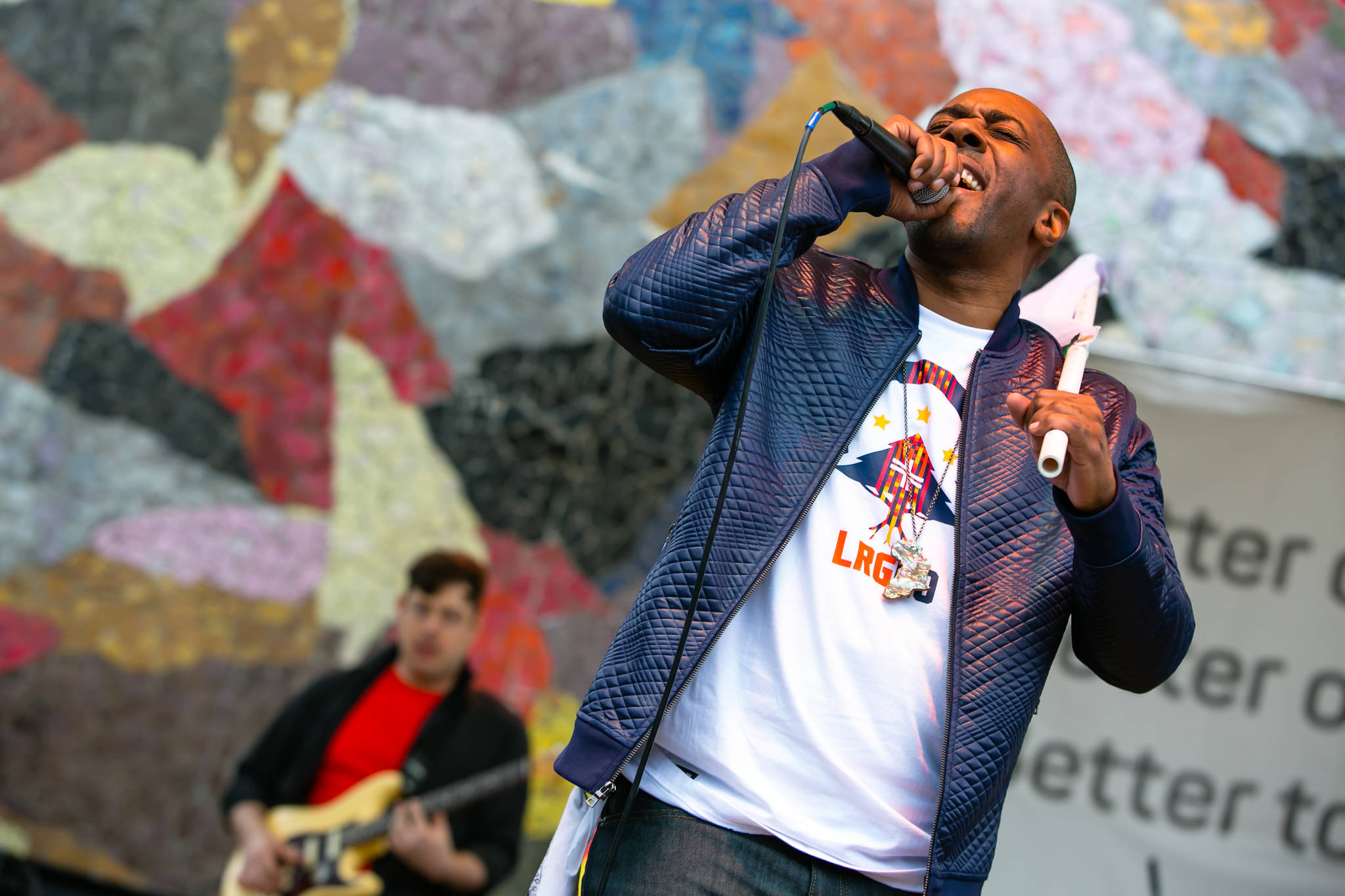As a member of the Métis people, Brad Mix feels a great sense of pride in his heritage. But without recognition from the U.S. federal government, he says, it’s been difficult to have a sense of belonging.
“Right now we’re just kind of a fractured community,” Mix says. “Up in Canada, we have Métis nations that are represented governmentally in each provence. But down here, we really don’t have anything.”
That is changing, Mix says, and a big reason for the shift is the Northwest Folklife Festival.
Every Memorial Day weekend, Folklife invites more than 5,000 artists to perform for and present their work to the 250,000 attendees that come to Seattle Center for the festival, which is celebrating its 46th anniversary this year. While the programming greatly benefits the onlookers by exposing them to traditions of cultures from throughout the Puget Sound region, the cultural participants benefit as well, by way of empowerment, connection, and recognition.
All three of these elements were at play last year when Mix took part in Folklife’s Circle of Indigenous Peoples as a representative of the Métis. At the center of the event is a pow wow, a tradition of the plains Indians that has been adopted by a great number of North American tribes. No single tribe has prominence in the festivities, but last year Mix was able to carve out a part of the programming to introduce festival crowds to the Métis, who are the product of the long intermingling of French and First Nations people in the American and Canadian West.
“We brought a Métis chief down,” he says. “We did an honoring ceremony and he addressed the people and spoke about the Métis culture.”
In the year since, says Mix, his fractured community is beginning to come together and will again be present at this year’s Folklife, where they will have a booth for attendees to learn about the culture and traditions of his people.
The case of the Métis is unique, but Mix, who now sits on the council of the Circle of Indigenous Peoples, says that people from other tribes benefit from the inclusive nature of the event as well.
“You have people who are living in Puget Sound, but their homelands might be back in South Dakota,” Mix says. “Folklife gives them the chance, through the Circle of Indigenous Peoples, to have an event that caters to all indigenous groups.”
Francisca Garcia, a manager at SEEDArts Studios, says that something similar happens with the various ethnic communities in Southeast Seattle that are represented on her organization’s stage at the festival. Building on its long-running Arts Gumbo events, SEEDArts has been inviting artists and makers from these communities to share their arts, music, and dance at Folklife for the last four years. Francisca, who herself performs Mexican folkloric dance, says that the SEEDArts stage has provided a place to gather for the area’s Ethiopian, Mexican, and Native American communities. It also, she says, gives them a sense of belonging to the larger civic community.
“Folklife gives them an opportunity to feel that their culture matters, that their traditions matter,” she says. “Not only does it matter, but you’re part of our greater city. … It’s different from when you are doing it in school or at a wedding in a hall in Renton than it is when you are doing it on a stage with greater Seattle looking at you.”
Musician Juan Barco recalls another time when artists accustomed to playing only weddings and parties performed at the festival. It was during the Norte Y Sure program in 1998, he says. The Mexicano, Chicano, and Tejano musicians from the rural eastern part of Washington state were reluctant to go over the pass, thinking that there was not a place for them or their music in the city. But once they arrived they were embraced, the program earning a distinction as one of the festival’s best ever.
“That was an exciting part to have the city open its arms and welcome the culture that had been there all along,” he recalls now. “And all of those people got to come together and get a taste of what a festival is like.”
The experience served as an education for some of the musicians, says Barco, who also helped produce a recording of many of the performances at the festival, a process that required a level of formality that was previously unknown to some of the musicians.
“They were used to people asking them to come to their birthday party for one hundred bucks cash; that was the way,” he says. “To have to fill out papers and all that, that was a different concept for a lot of those bands. Every band that is pro, you know you have to go through that.”
For most, though, the takeaway from Folklife has more to do with community than contracts. That will be the case when the Circle of Indigenous Peoples gathers yet again in the shadow of the Space Needle this year for what may be its largest celebration yet.
The reason for the possible swell in participation is beyond Folklife’s control. Since the last festival, the nation has watched tribes come together in protest at the Standing Rock Indian Reservation in South Dakota. In the year since, the isolated Native American communities have come together as never before, says Kyle Schierbeck, an active member of the Standing Rock Sioux Nation who was involved with the efforts in South Dakota and was invited in to help organize this year’s event. Schierbeck says he is expecting the Circle of Indigenous Peoples—with its open invitation to all tribes—to become a focal point for the renewed energy in the Native American community, Folklife once again serving as a gathering place for those seeking connection.
“Because of what’s happened in the last year there is much more cohesiveness and connectivity that has occurred,” he says. “All indications from the Native American community is that it is a big deal for them. It is profound.”
The 46th Annual Northwest Folklife Festival takes place May 26-29 at Seattle Center. For a full schedule, click here.






